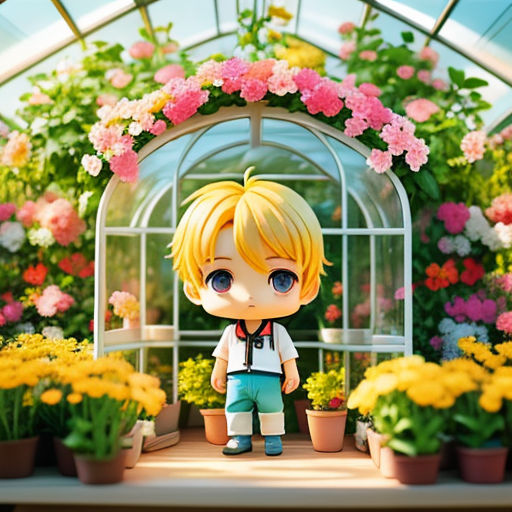
Blossoming Dreams
By Storybird

10 Aug, 2023

Takeru had always had a soft spot for flowers. His name, in his native Japanese, meant "bamboo" and he liked to think it reflected his connection to nature. At 17, Takeru wasn't your typical teenager. He was a florist, and he had a greenhouse where he nurtured and cultivated his precious plants.
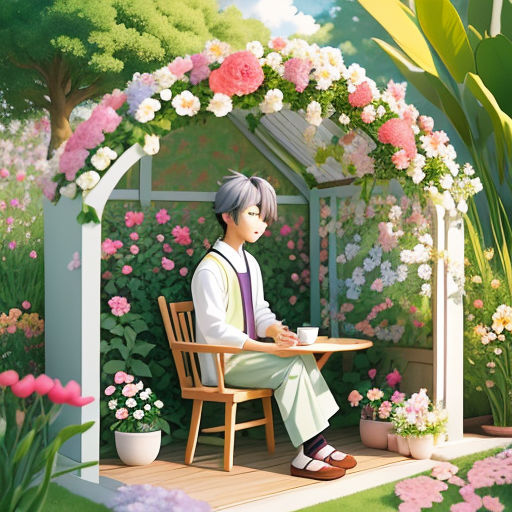
His greenhouse was his haven, his escape from the world. Here, amidst the riot of color and scent that filled the air, Takeru could lose himself. He could forget about the expectations of the world and simply be; be with his flowers, be himself.
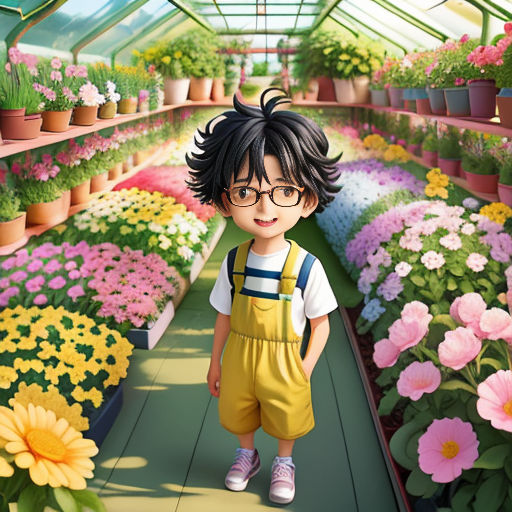
Every morning Takeru would wake up early to ensure his plants received the best care. He would gently water each one, check for signs of disease or pests, prune the dead leaves and tendrils. His quiet dedication was evident in the vibrancy of the blooms that filled the greenhouse.
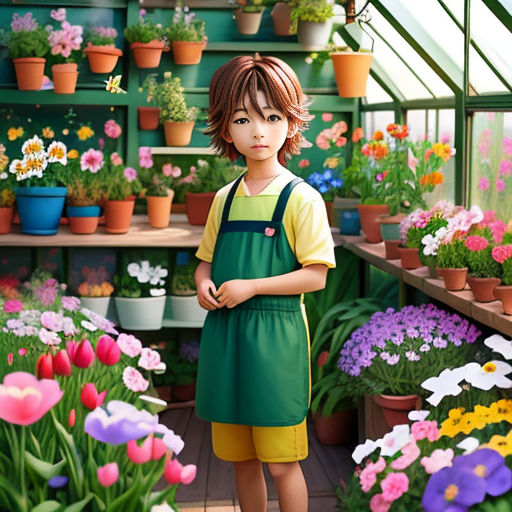
Takeru wasn't just knowledgeable about flowers; he loved them in a way that went beyond mere interest. Each flower in his greenhouse was special to him, and he treated them all with a kind of reverence. He would often spend hours simply sitting amongst his plants, absorbing the quiet peace they offered.
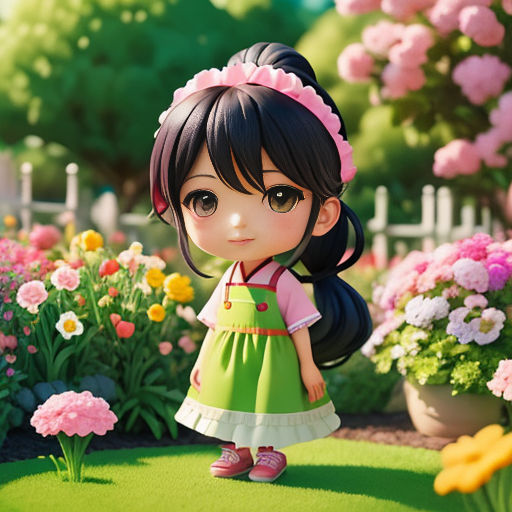
To the casual observer, it may seem that Takeru was merely obsessed with his flowers. But for him, the flowers weren't just beautiful decorations; they were a symbol of life. In their growth and bloom, he saw the essence of being alive - the struggle, the beauty, the fragility, and the resilience.
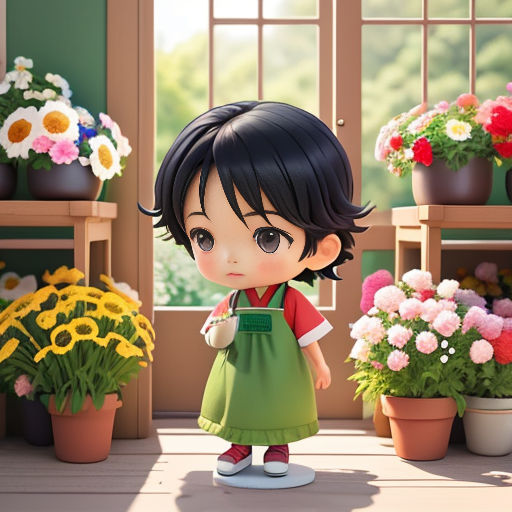
Takeru's parents, both florists themselves, truly appreciated his passion. They encouraged him, gently guiding him while giving him enough space to learn on his own. They saw their own love for nature reflected in Takeru and were proud of their son's dedication.
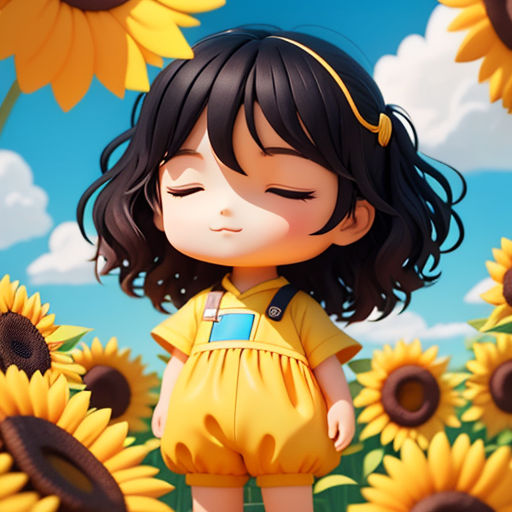
Takeru’s favourite flowers were sunflowers. They were bright, bold, and sturdy, and he admired their resilience to weather the storms. They resembled hope, reminding him that even in tough times, one could stand tall and face the sun bravely.

Takeru also had an affinity for the delicate cherry blossoms. Their ephemeral beauty reminded him of the fleeting nature of life. But most importantly, they reminded him of his grandmother Midori, who had a cherry blossom tree in her backyard.
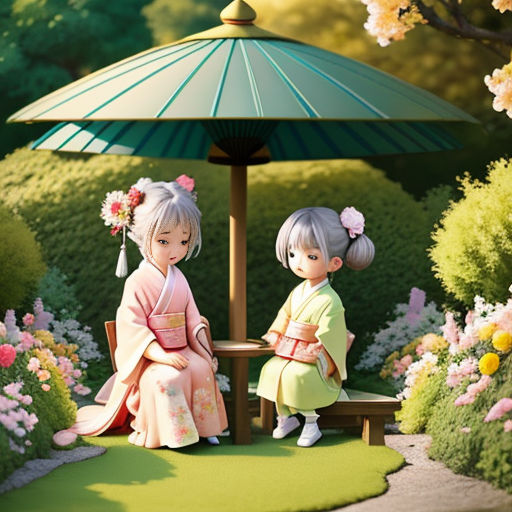
Midori was the one who initially kindled Takeru’s interest in flowers. She used to tell him tales of different flowers, their meanings, and their significance in Japanese culture. Her stories were always filled with warmth and wisdom, like the old woman herself.
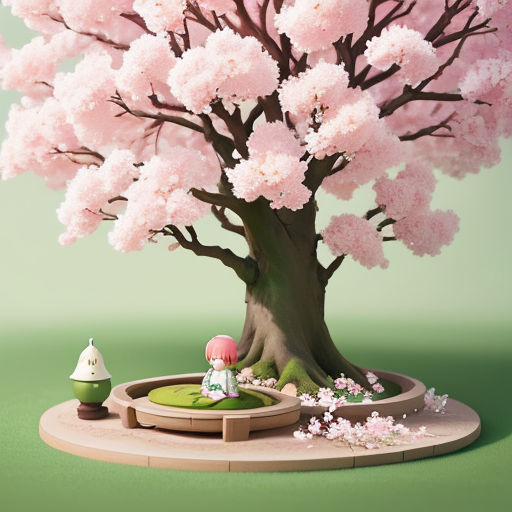
One day, Midori showed Takeru how to carefully transplant a young cherry blossom sapling into a pot. She told him that like people, plants also needed love, care, and the right environment to flourish. The young boy was fascinated, and this incident marked the beginning of his journey into the world of floristry.
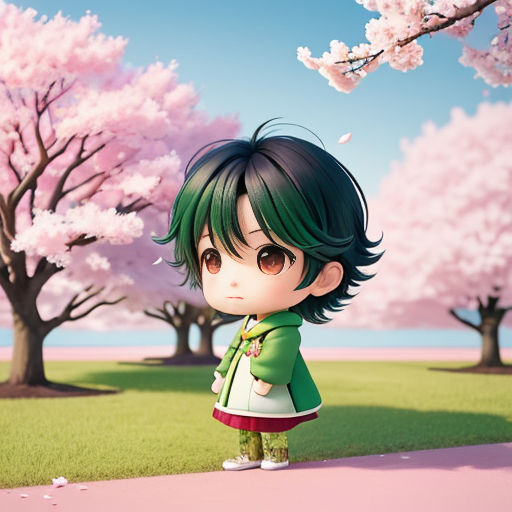
When Midori passed away, Takeru was heartbroken. It felt as if the bright colors of his world had dimmed. He missed her stories, her warmth, and the gleam of joy in her eyes when she looked at her cherry blossom tree.
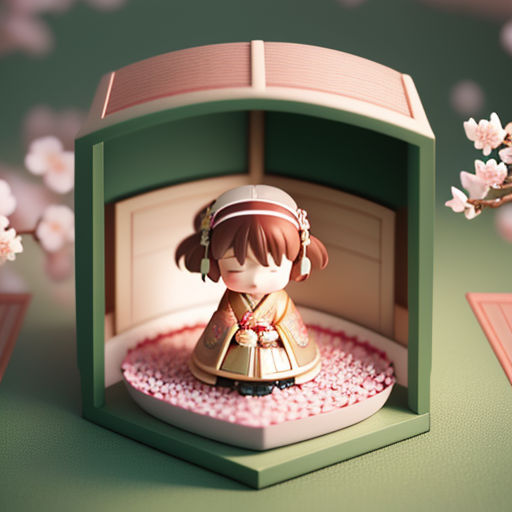
During the wake, Takeru received one of Midori's precious possessions - a small box of cherry blossom seeds. He felt a surge of emotion as his fingers traced the neat rows of seeds. He promised himself that he would look after them, like a precious legacy passed down to him.
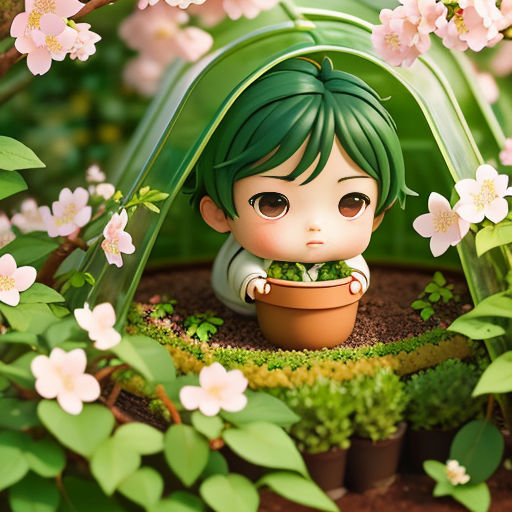
Takeru planted the cherry blossom seeds in his greenhouse, taking extra care to ensure they had the best growing conditions. He waited with bated breath for signs of life sprouting from the dark soil.
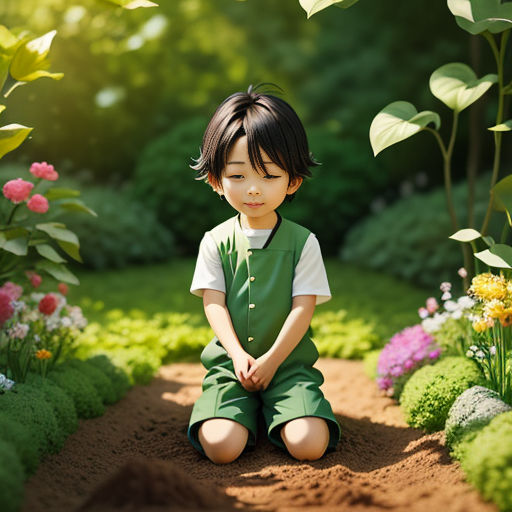
After weeks of painstaking care, the first tiny saplings peaked through the soil. The sight filled Takeru with a profound joy. It was as if a piece of his grandmother had sprung back to life, in the heart of the small, green leaves.

As the cherry blossom tree grew, Takeru felt his sorrow ebbing away. The blossoms brought him peace, and he often found himself sitting under the tree, basking in its soft pink glow. It was a tangible connection to his beloved grandmother, a reminder of her wisdom and love.
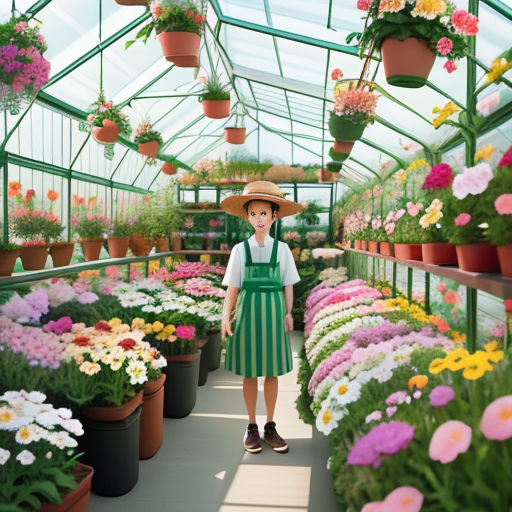
Takeru also started creating unique flower arrangements for his customers, using the blooms from his greenhouse. His compositions were dynamic, vibrant, and full of emotions, reflecting his deep understanding and love for his plants.
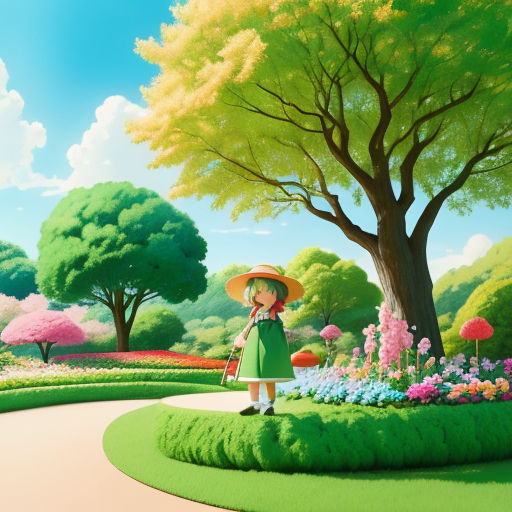
People started coming from far and wide to purchase his flowers, and Takeru’s fame spread. His parents were proud of him, but Takeru remained humble. He never forgot that he was just a vessel through which the true beauty of nature could shine.
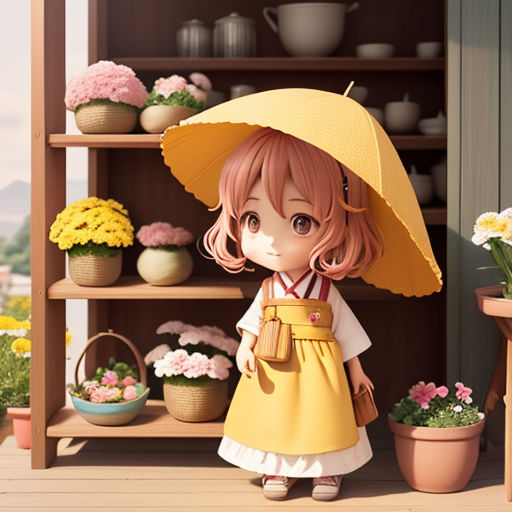
Takeru’s flowers became a source of solace for many. For some, they were a symbol of love, for others, a token of apology or a manner of expressing gratitude, joy, or grief. Each customer was unique but they all shared the language of flowers.

Takeru grew older, and his greenhouse thrived. The cherry blossom tree grew tall and robust, spilling pink petals in the spring. His sunflowers stood tall and proud, their faces towards the sky. And amidst this oasis of color and life, Takeru found his purpose, his success, and more importantly, his peace.
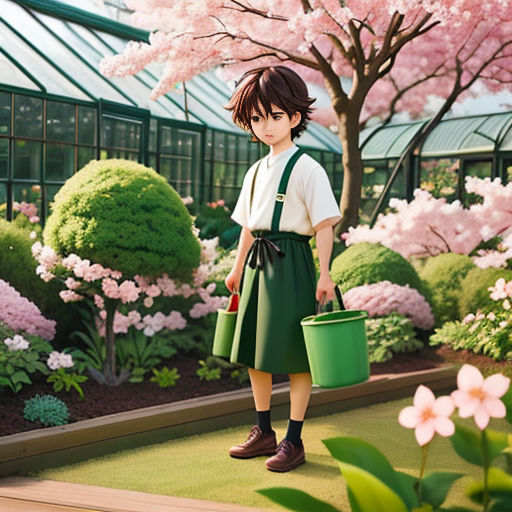
In the end, Takeru's love for plants wasn't merely a passion or a career. It was a way of life, deeply intertwined with his own growth and bloom. The boy who had once carefully tended a single cherry blossom sapling in his grandmother's backyard had grown into a man who nurtured an entire greenhouse. And in doing so, he kept his connection with his grandmother alive, and made her proud.